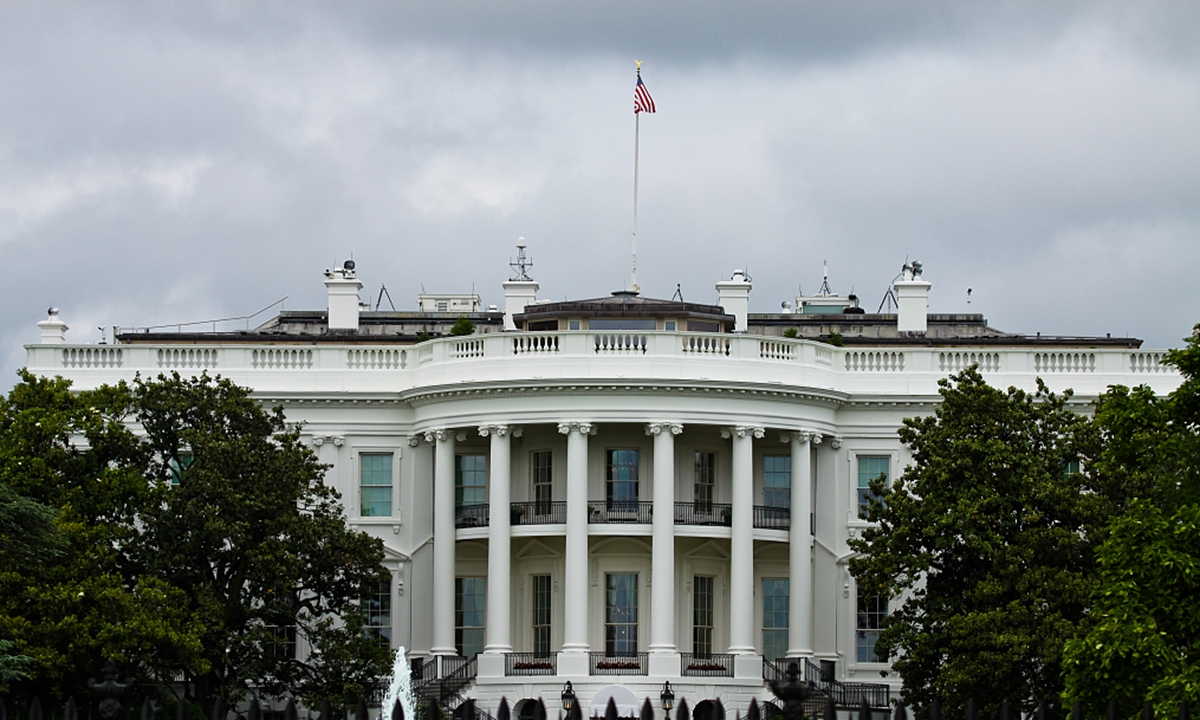
White House Photo: VCG
The US strategy for a "free and open Indo-Pacific" that leans heavily on coordinating with its alliances, building up stronger presence in Southeast Asia as well as military deterrence to counter China is nothing but a ridiculous Biden administration fantasy filled with deceptive actions to tie Asian countries to its anti-China chariot to stir up regional turbulences, experts said on the US so-called Indo-Pacific Strategy.
The 12-page strategy overview, released by the White House on Friday, vowed to focus on "every corner of the region from South Asia to the Pacific Islands" to strengthen commitment to pursue a "free and open Indo-Pacific" through building stronger alliance, strengthening emerging partnerships and investing more in the region.
The strategy issued by the Biden administration demonstrates US government's policy continuity to besiege China, Li Haidong, a professor from the Institute of International Relations of China Foreign Affairs University, told the Global Times on Saturday.
Rather than repeatedly mentioning "China" and "democracy,", this new overview in a crafty way overstates "partnership" and "alliance" in an attempt to tout for support and understanding from the American public, its allies and media, Li said.
The strategy includes 10 core lines of plans to implement the strategy over the next 12 to 24 months. "Our objective is not to change the PRC but to shape the strategic environment in which it operates," the strategy document says.
"Although the overview seems more like a practical and detailed action plan than that of the previous Trump administration, its call for closer US integration with other players means requiring Asian countries to cut off ties and to uncouple the current cross-national frameworks with China. But is it possible?" Li asked.
Lü Xiang, a research fellow at the Chinese Academy of Social Sciences saw the strategy as a "ridiculous conclusion of the US on dealing with so-called 'Indo-Pacific' affairs" in an attempt to join hands with a wide range of Asian countries who are reluctant to do so, except Australia.
When the US is obviously in a waning position to continue its hegemonic status in the region and busy in touting for "Russia threat" among European allies, domestically, the Biden administration is facing a backlash from the American public, which makes its plan doomed to fail, Lü said.
The seemingly positive wording within the strategy for the good of the region, such as saying their bid to counter China is to "safeguard regional security," seek regional "connectivity," cannot conceal real intention of the US - that's is to stir up instability in the Asia-Pacific region and coerce Asian countries to fall into US trap of containing China under the disguise of maintaining regional peace and prosperity, which is clear to all, Li noted.
The release of the strategy coincides with the visit of Secretary of State Antony Blinken to the Asia-Pacific region who is about to meet Fiji leaders after US met Quad members to serve its own strategic goal for "Indo-Pacific" affairs and to target China. The strategy also mentioned the importance of a strong India.
Lü said Australia appears to be the only loyal US follower in the Quad, betting all on worsening China-US relations like a desperate gambler, other than that, other allies are reluctant to buy into the vision set by the US.
The reference to India in the US strategy certainly fulfills India's ambition to be treated as an important regional power, but India as a developing country, is sober in dealing with ties with China and US, Lü noted.
While reaffirming Washington's One China policy in the strategy, the document framed the Taiwan question, which is a purely internal affair of China, as a broader issue of regional stability, and portrays the US military presence in South, Southeast Asia and the Pacific as a reasonable move.
The US just shapes itself as a responsible side in dealing with China-US relations, using this to cover up its aggressive posture in making trouble in the region and to influence the public and its allies, experts said.
Apart from seeking to work with China in areas like climate change and nonproliferation, fields of trade, economic and digital infrastructure linkages, and communications technology were all noted by the US within the strategy as areas to counter China.
Experts said the stance of the US toward China will tarnish cooperation between the two powers, including on climate change.. For China, the country will continue to focus on self-development and will not take the initiative in provoking conflicts with the US.




